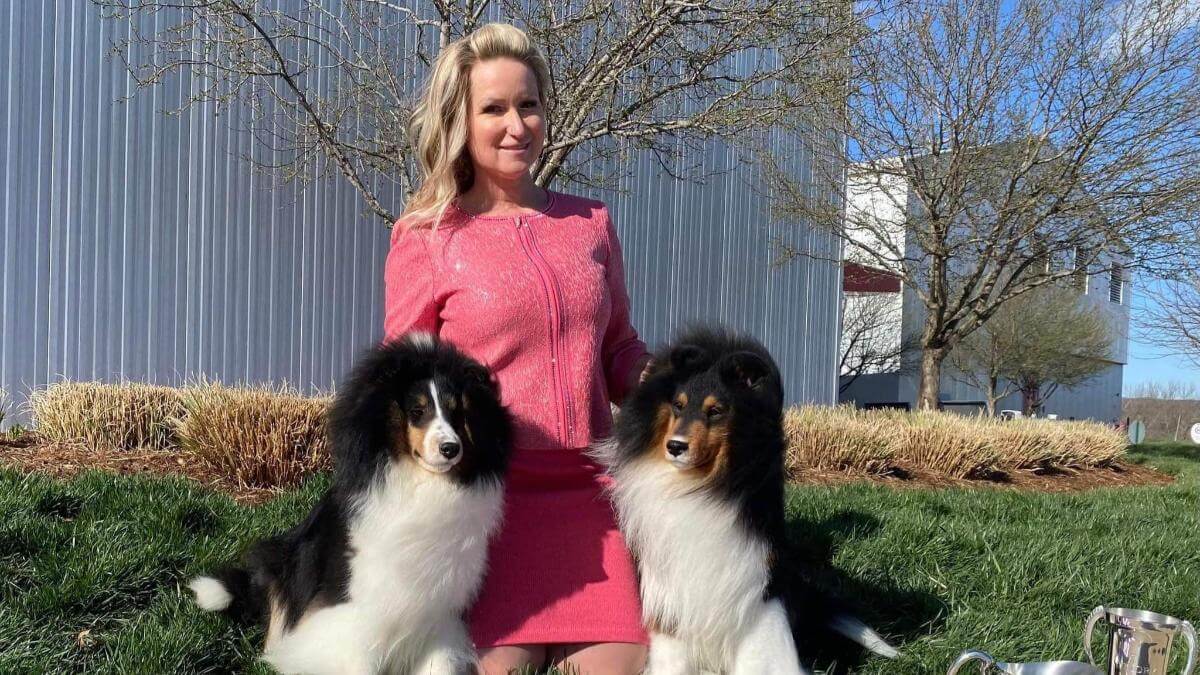
Home » Tracy Robinson | Mystic Shelties Shetland Sheepdogs

Tracy Robinson
1. My name is Tracy Robinson, and I live in a small town in Alberta, Canada, called Devon. It is a pretty tight-knit community, which I love! I own and operate an all-breed grooming salon (since 2003). My late mother, Lorna Stolz, founded Mystic Shelties (permanently, registered) in 1989. I have been heavily involved in the breed since 1990. I grew up with horses and competed a lot in Junior Handling. I also professionally handled all breeds for many years.
2. The Shetland Sheepdog expression, alertness, and inquisitive nature are my favorite parts of this breed. It is so important to remember that a “reserved” temperament does not mean scared and shy. Sadly, I have seen some really terrified dogs in the ring, and even being rewarded. The Sheltie should have a distinct outline, one that is balanced. They should have a strong topline and should be able to work all day long without breaking down. We must also remember that part of a balanced topline when moving is a proper tail set. A tail set too high disrupts a fluid gait.
3. Yes, absolutely. Shelties are by far one of the best family dogs on the planet. They fit so well into the dynamics of all types of different families. They’re incredibly versatile! They love being active, but they have no trouble with their “off switch” once it’s time to relax.
4. Admittedly, I am still pretty old-school, but I appreciate the advances in technology with progesterone testing especially. The majority of my breedings are done with shipped chilled semen, so timing is crucial. Social media outlets make it easy to communicate with, and educate the public about, the world of our beautiful purebred, purposefully bred dogs.
5. I have—thank goodness. The public are starting to realize that intentionally well-bred animals are not only much easier to predict but typically fit into their family’s lifestyle and everyday life with ease.
6. I believe that social media has played a huge positive role in our sport. It allows us to promote education, dog shows, dog sports, purebred dogs, etc. Unfortunately, at the same time, I have seen it used as a very ugly tool for people to sit behind a keyboard and go on a “witch hunt.” It saddens me very much to see people blindly following and believing rumors without doing any fact checking of their own.
7. The biggest positive change I have experienced is the way our Junior Handlers are welcomed with open arms! The experienced breeders and handlers are eager to take youngsters under their wings, and encourage them to chase their dreams. It’s really refreshing to see how the new generation of our sport is supported with all kinds of education and seminars, well-organized by some amazing volunteers! Huge shout out especially goes to my own American Shetland Sheepdog Association (ASSA) for the incredible Junior’s seminar that is always put on at our National Specialty. I finally got to sit down this year and spectate, as my own child was able to attend. Well done!